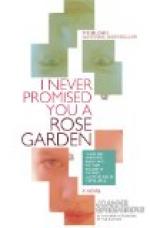Evan, who has had a wide experience in watching the development of his plans, both by professional gardeners and amateurs, says that he is convinced more and more each day that, where transplanting of any sort fails, it is due to carelessness in the securing of the root anchors, rather than any fault of the dealer who supplies the plants, this of course applying particularly to all growths having woody roots, where breakage and wastage cannot be rapidly restored. When a rose is once established, its persistent roots may find means of boring through soil that in its first nonresistant state is impossible. While stiff, impervious clay is undesirable, a soil too loose with sand, that allows the bush to shift with the wind, instead of holding it firmly, is quite as undesirable.
In planting all hardy or half-hardy roses,—whether they are of the type that flower once in early summer, the hybrid perpetuals that bloom freely in June and again at intervals during late summer and autumn, or the hybrid teas that, if wisely selected and protected, combine the wintering ability of their hardy parents with the monthly blooming cross of the teas,—it is best to plant dormant field-grown plants in October, or else as early in April as the ground is sufficiently dry and frost free.
These field-grown roses have better roots, and though, when planted in the spring, for the first few months the growth is apparently slower than that of the pot-grown bushes, it is much more normal and satisfactory, at least in the Middle and New England states of which I have knowledge.
All roses, even the sturdy, old-fashioned damasks, Madame Plantier, and the like, should have some covering in winter, such as stable litter of coarse manure with the straw left in. Hybrid perpetuals I hill up well with earth after the manner of celery banked for bleaching, the trenches between making good water courses for snow water, while in spring cow manure and nitrate of soda is scattered in these ruts before the soil is restored to its level by forking.
The hybrid teas, of which La France is the best exponent, should be hilled up and then filled in between with evergreen branches, upland sedge grass, straw or corn stalks, and if you have the wherewithal, they may be capped with straw.
I do not care for leaves as a covering, unless something coarse underlies them, for in wet seasons they form a cold and discouraging poultice to everything but the bob-tailed meadow mice, who love to bed and burrow under them. Such tea roses as it is possible to winter in the north should be treated in the same way, but there is something else to be suggested about their culture in another place.
The climbing roses of arbours, if in very exposed situations, in addition to the mulch of straw and manure, may have corn stalks stacked against the slats, which makes a windbreak well worth the trouble. But the more tender species of climbing roses should be grown upon pillars, English fashion. These can be snugly strawed up after the fashion of wine bottles, and then a conical cap of the waterproof tar paper used by builders drawn over the whole, the manure being banked up to hold the base firmly in place. With this device it is possible to grow the lovely Gloire de Dijon, in the open, that festoons the eaves of English cottages, but is our despair.




